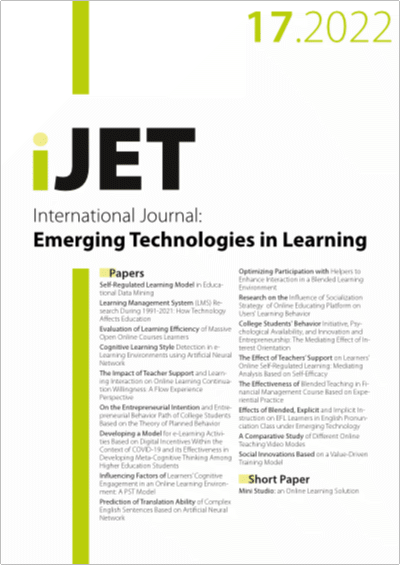Effects of Blended, Explicit and Implicit Instruction on EFL Learners in English Pronunciation Class under Emerging Technology
DOI:
https://doi.org/10.3991/ijet.v17i17.34065Keywords:
blended instruction, explicit instruction, implicit instruction, English pronunciation teaching, audio synthesis technologyAbstract
As the most important foreign language in China, English poses great challenge for teachers to improve the performance of ESL (English as a second language) learners through in-class instruction. Blended, explicit, and implicit instruction are three widely used approaches in English class teaching, and it may be difficult to choose which one should be used in class to help the English language learners. With audio synthesis technology applied as an enhancement for teaching, this study aims to research the three effects on English pronunciation teaching in aspects of the performance and satisfaction of English language learners. 120 English learners in China were equally divided into three groups which were instructed by blended, explicit, and implicit instruction respectively. Based on the data collected by test and questionnaire in pre-test, in-test, and post-test, the results show that the blended instruction performs best in aspects of the improvement of performance and the class satisfaction. These findings indicate the great potential of blended instruction in English language teaching and more investment should be taken to promote its application to help the Chinese to better acquire this important language.
Downloads
Published
How to Cite
Issue
Section
License
Copyright (c) 2022 Zhilin Luo, Xuefeng Shao, Thitinant Wareewanich

This work is licensed under a Creative Commons Attribution 4.0 International License.



